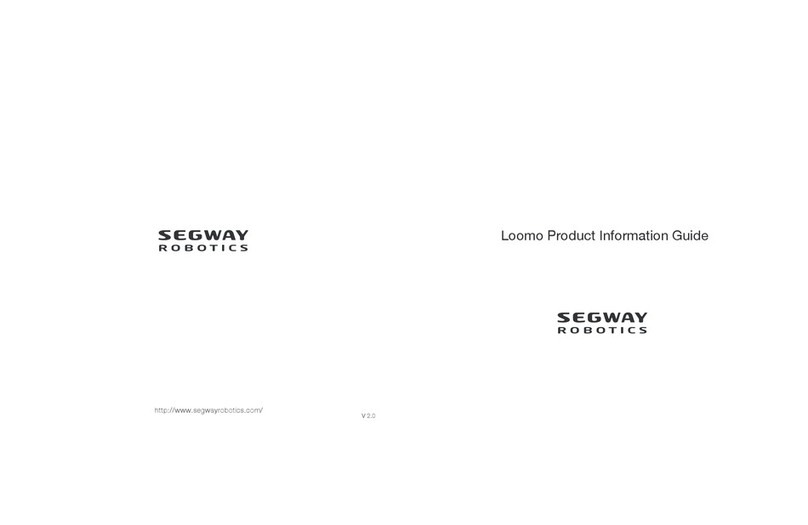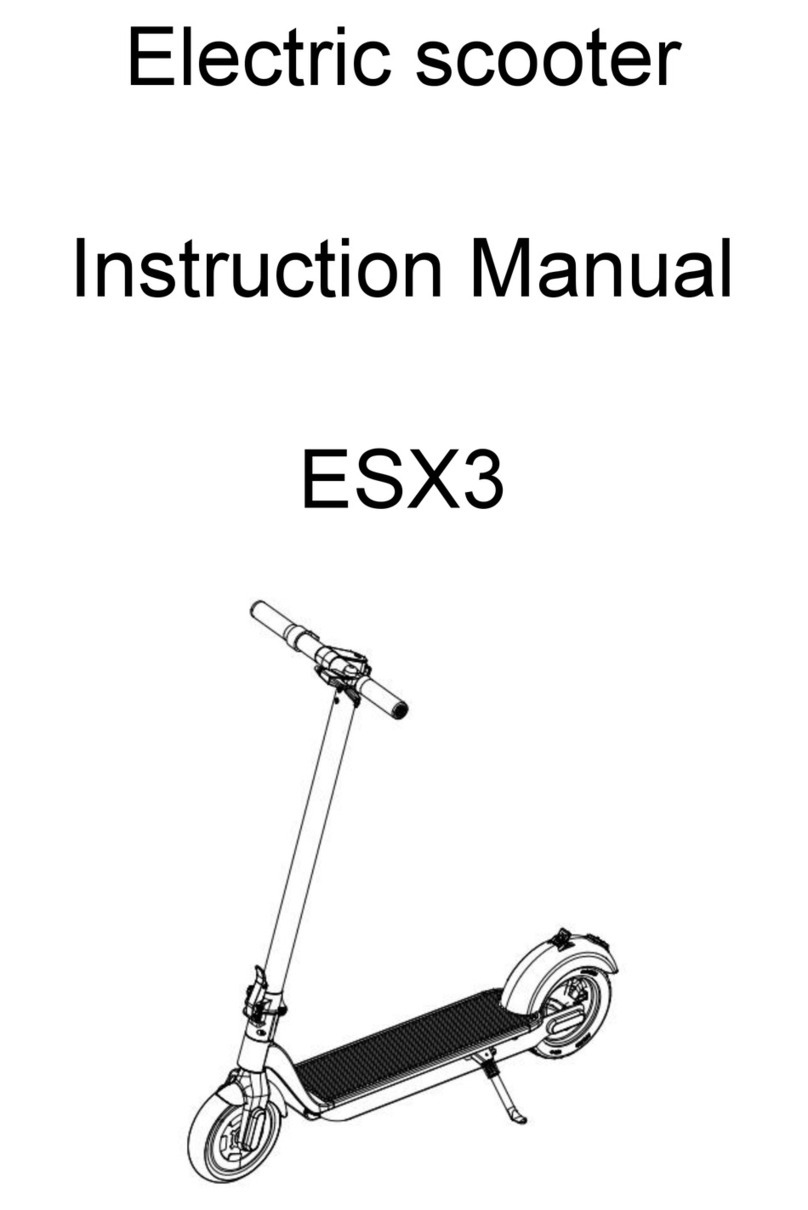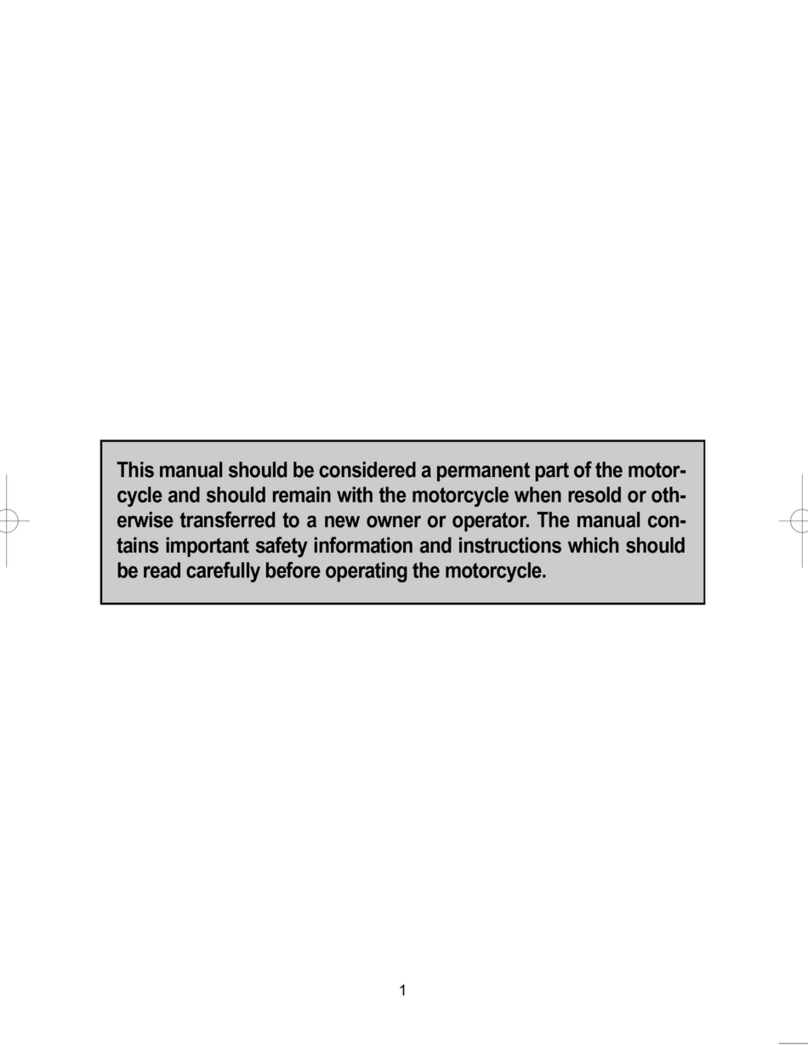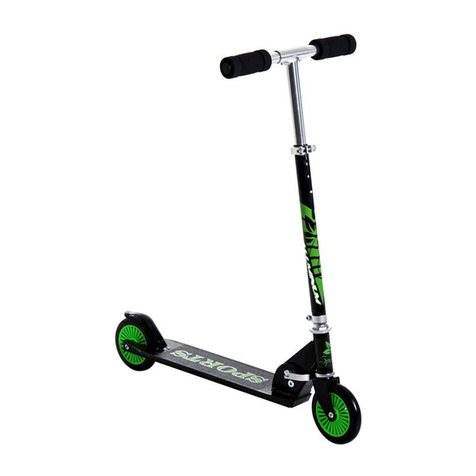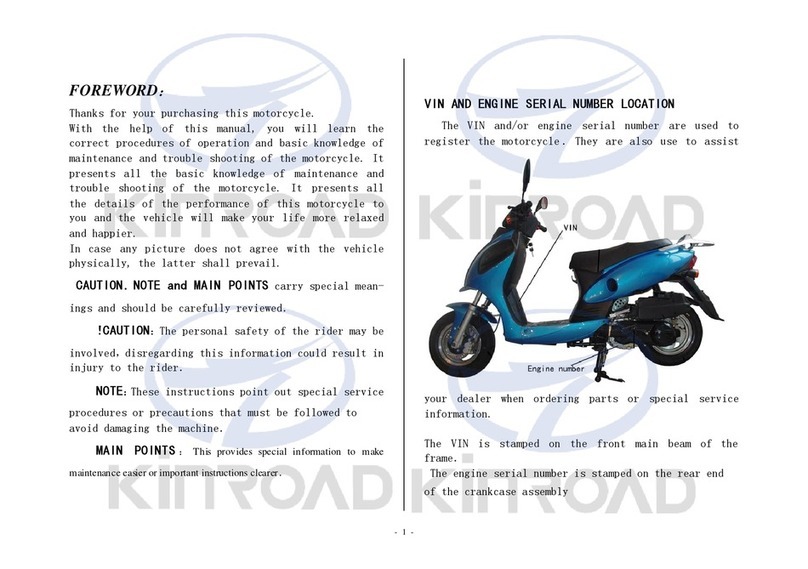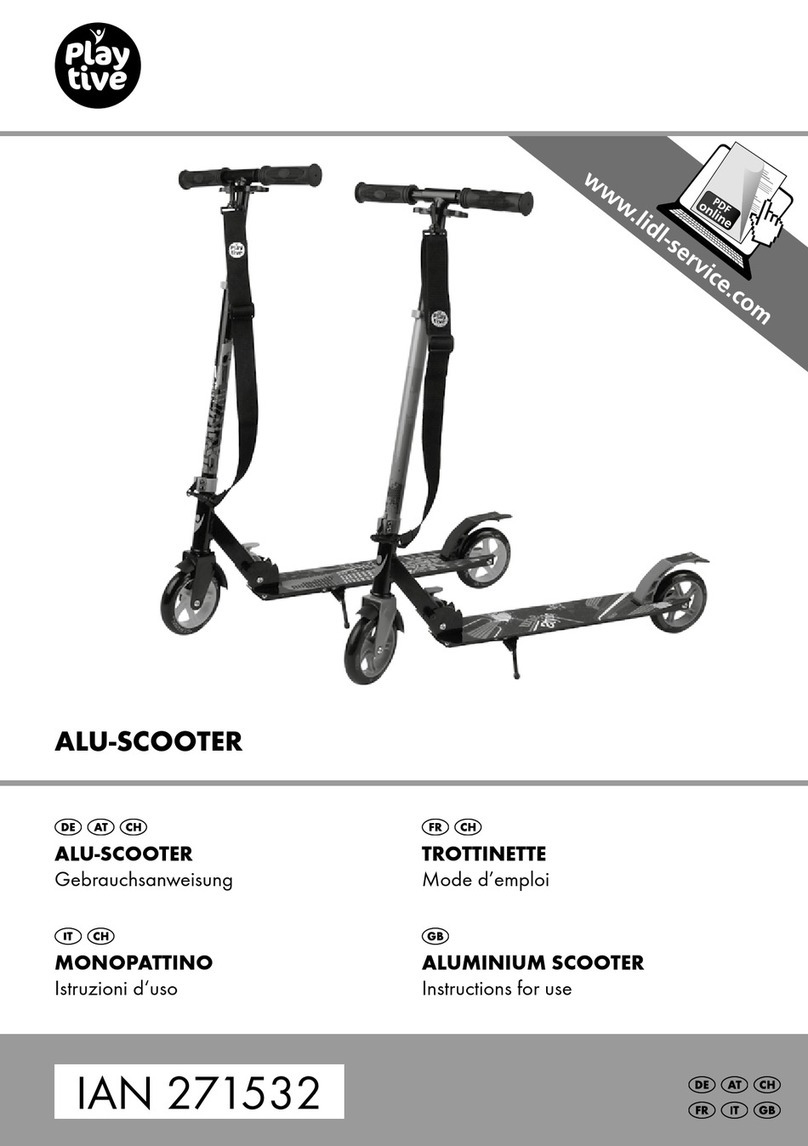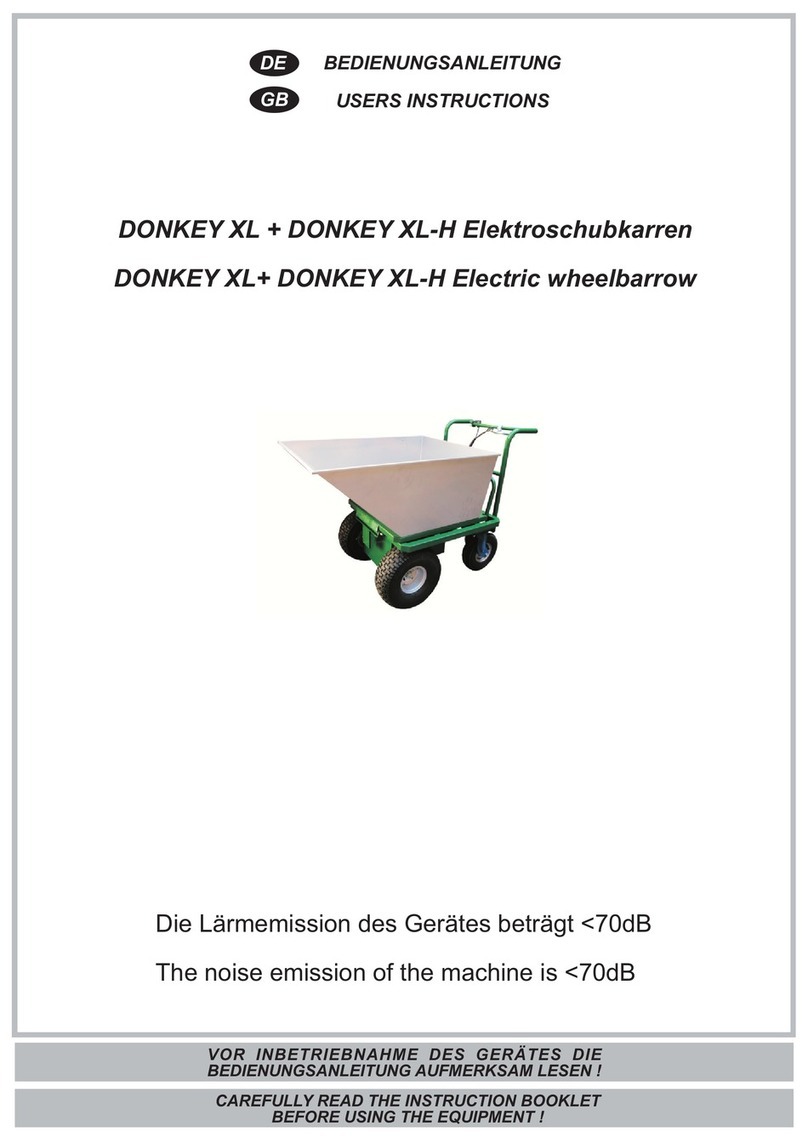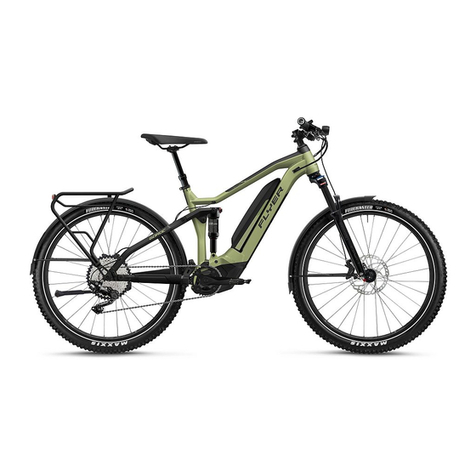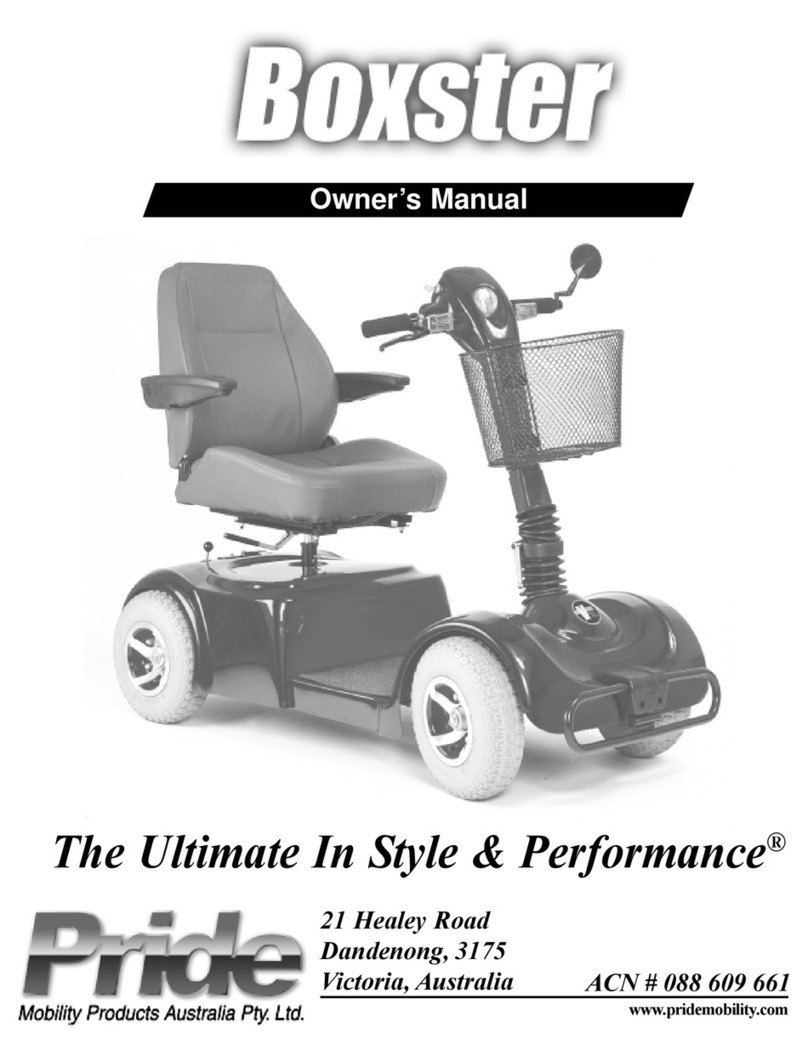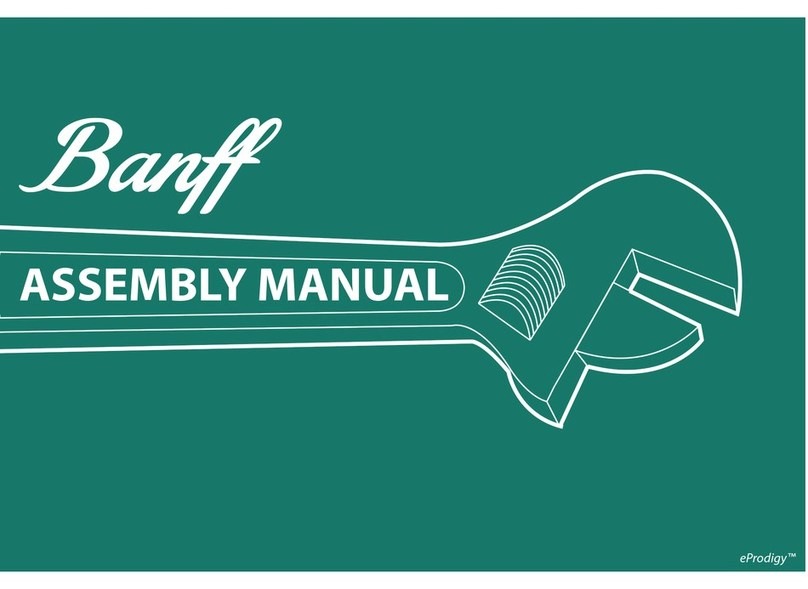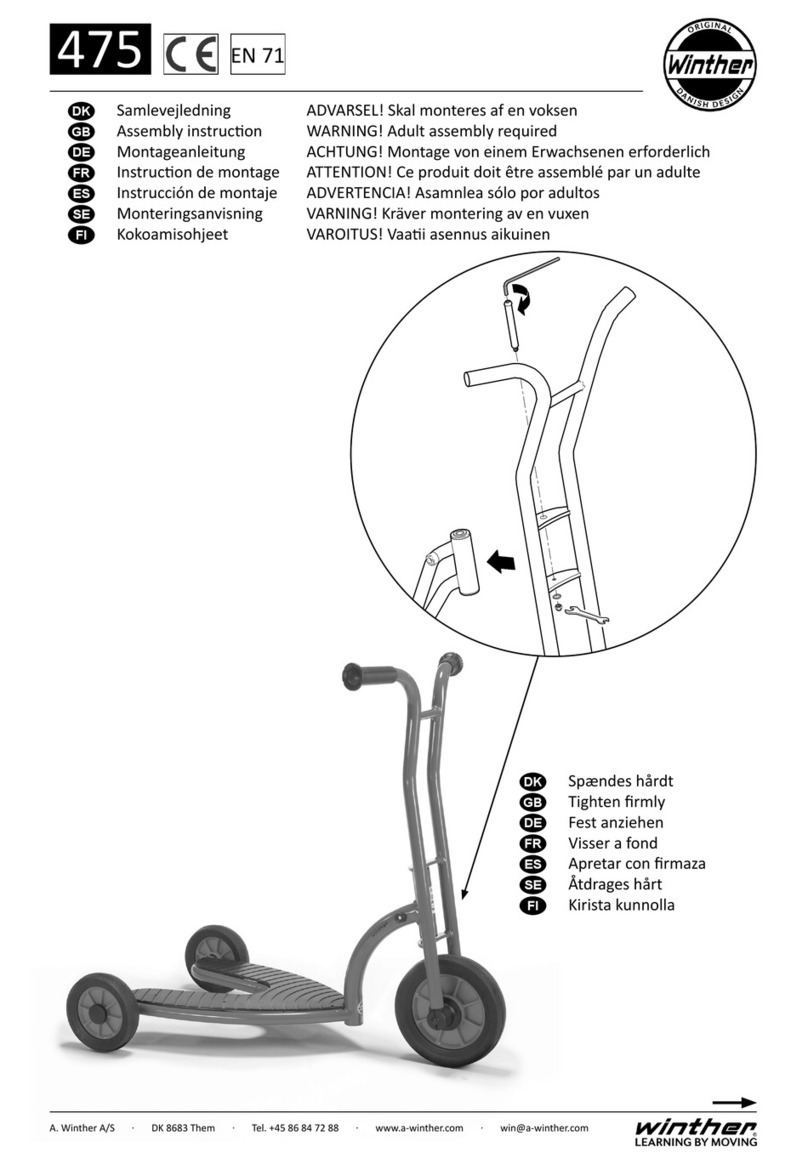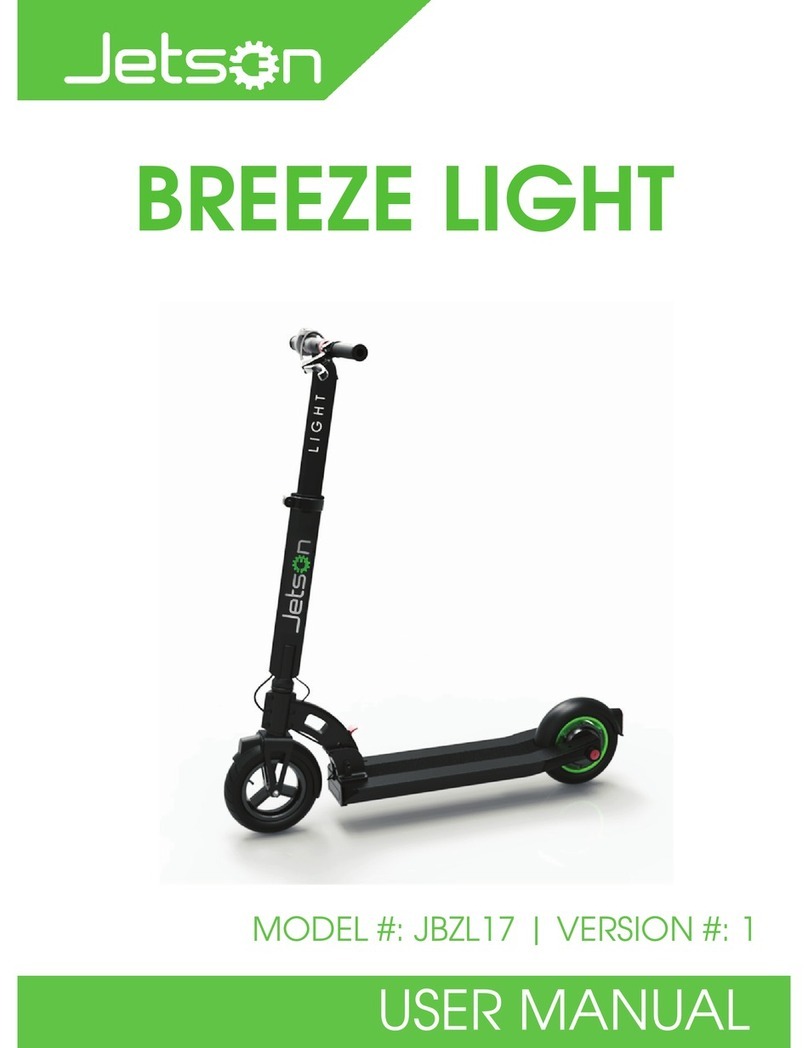Active Care Medical Pilot 2310 User manual


Questions? Call 866.621.4933 or visit www.activecaremed.com.
Pilot Owner’s Manual 1
Table of Contents
1. Preface ................................................................................................2
2. Safety Notices .....................................................................................3
Before the First Use of Your Scooter.............................................................................. 3
Regular Use of Your Scooter......................................................................................... 3
Labeling of Your Scooter.............................................................................................. 4
3. EMI......................................................................................................5
Electromagnetic Interference (EMI) From Radio Wave Sources.......................................... 5
Powered Scooter Electromagnetic Interference (EMI)....................................................... 6
4. Parts....................................................................................................7
Pilot 2310 ................................................................................................................. 7
Pilot 2410 ................................................................................................................. 8
5. Operation ............................................................................................9
Operation Panel......................................................................................................... 9
How to Operate Your Scooter....................................................................................... 9
Speed Dial................................................................................................................ 9
Power Switch ............................................................................................................ 9
Headlight/Taillight Button.......................................................................................... 10
Moving and Braking Going Forward............................................................................. 10
Moving and Braking In Reverse.................................................................................. 10
Signal Light Switch .................................................................................................. 11
Horn Button............................................................................................................ 11
Seat ...................................................................................................................... 11
Battery Gauge......................................................................................................... 11
Sleep Mode............................................................................................................. 12
Freewheel Mode ...................................................................................................... 12
Tiller Adjustment ..................................................................................................... 13
Driving Your Scooter ................................................................................................ 13
Stopping................................................................................................................. 14
6. Battery & Charger..............................................................................15
Charging the Battery................................................................................................ 15
Cleaning the Battery................................................................................................ 16
7. Inspection & Maintenance .................................................................18
Daily Checking......................................................................................................... 18
Regular Maintenance Record...................................................................................... 18
Battery, Fuses, Circuit Breaker and Tires ..................................................................... 20
Maintenance............................................................................................................ 21
Lubrication.............................................................................................................. 21
Storage .................................................................................................................. 21
8. Troubleshooting ................................................................................23
9. Specifications ....................................................................................25
10. Limited Warranty...............................................................................26
Warranty Registration............................................................................................... 28

Questions? Call 866.621.4933 or visit www.activecaremed.com.
Pilot Owner’s Manual 2
1. Preface
Please read this owner’s manual before using the scooter. Improper use of the
scooter could result in harm, injury or traffic accidents.
This owner’s manual includes operation instructions for every aspect of the scooter,
assembly instructions, as well as instructions for how to deal with possible
accidents.
The symbols used in this manual are explained below. Read carefully, especially
the parts marked with these symbols:
Warning Improper usage could lead to death or serious
injury
◊
Caution Improper usage could lead to injury and/or
damage to you scooter.
Suggestion
Follow these instructions to keep the status of
the scooter working well and ease your
operation.
This manual includes the repair and maintenance record chart and Warranty.
Please keep it in a proper place or on the scooter.
If someone else uses the scooter, please be sure to give him or her the instruction
manual.
As designs change, some illustrations and pictures in the manual may not
correspond to the scooter that you purchased. We reserve the right to make
design modifications.
The manufacturer disclaims all responsibilities for any personal injury or property
damage which may occur as a result of improper or unsafe use of its products.

Questions? Call 866.621.4933 or visit www.activecaremed.com.
Pilot Owner’s Manual 3
2. SAFETY NOTICES
BEFORE THE FIRST USE OF YOUR SCOOTER
The user should be familiar with the operation of this scooter before driving.
Therefore, keep these safety notices in mind.
The same traffic rules for pedestrians apply to the use of this scooter.
For your safety, please follow the rules that apply to pedestrians.
1. Ride on sidewalks or pedestrian areas only.
2. At the end of a sidewalk, be aware of the cars on the road.
3. Be extremely cautious when driving your scooter around heavy traffic streets
or shopping malls.
4. Always obey pedestrian traffic signals.
Practice operating your scooter
Until you are familiar with the operation of your scooter, please practice in a wide
and open area, like a park. To prevent the possibility of falling off your scooter
while driving, bear in mind the scooters driving motion, such as whether it is
accelerating, stopping, turning, reversing, or going up or down inclines.
1. Please set the speed dial to the lowest speed initially.
2. Be sure someone is accompanying you and watches for traffic while you are
driving on the road for the first time.
3. Be sure you are able to control and operate your scooter safely and
confidently before changing to a higher speed.
The ActiveCare scooter is limited to one passenger
Do not carry any passengers on your scooter (including children). Do not use this
scooter to carry or transport goods.
REGULAR USE OF YOUR SCOOTER
Please carry out daily inspections. Refer to Section 7 “Inspection & Maintenance”
for inspection procedures.
Always make sure your scooter’s battery is fully charged before operating.
Make sure the throttle lever is secure before turning on your scooter.
Do not stretch your body out on the scooter
Such action may cause you to lose your balance or be injured. Also, pay attention
to loose clothing that could get tangled in the wheels.

Questions? Call 866.621.4933 or visit www.activecaremed.com.
Pilot Owner’s Manual 4
Do not use your scooter under any of these circumstances:
•The road is muddy or has loose gravel
•The road is bumpy, narrow, or snow covered
•The road is beside a canal or waterway without fencing or hedges
•Do not drive your scooter after consuming alcohol or when fatigued
•Do not drive your scooter at night or in inclement weather
Additionally, avoid holes in the road where your wheels may get stuck. Do not
make sudden turns. Do not ride on an escalator.
Do not use a mobile phone or other wireless communication device while
driving
Also, do not charge a mobile phone or other electrical devices from your scooter.
Be careful driving on or near ramps and inclines
1. Be careful while driving up a steep incline. Refer to “CLIMBING ANGLE” in
Section 9 “SPECIFICATIONS” for details.
2. In order to avoid damage or injury to the scooter the driver should not lean
against or pull on the operating lever while going up or down an incline.
3. When climbing up an incline, please drive slowly. You can set the speed dial
to a higher speed of “5”. When going down an incline, never reverse your
scooter. Set the speed dial to the lowest speed setting “1”.
4. Do not drive through any holes in the road. Refer to “MAXIMUM GROUND
CLEARANCE” in Section 9 “SPECIFICATIONS” for details.
5. Do not pass through water covering the road unless the water is less than 1
inch deep.
6. Please drive slowly on roads with drops or dips.
7. Do not make sudden turns while drive on gravel roads or ramps.
Warning!
Do not set the scooter in freewheel mode when driving on an incline
or decline.
Maximum User Weight Limit
Refer to “MAXIMUM LOAD WEIGHT” in Section 9 “SPECIFICATIONS” for details.
Overloading your scooter will lead to damage to, or malfunction of, your scooter.
This could cause the scooter to become a safety hazard. The warranty does not
cover damage from overloading.
LABELING OF YOUR SCOOTER
Please read all the labeling on the scooter before driving it. For your future
reference, do not remove them.

Questions? Call 866.621.4933 or visit www.activecaremed.com.
Pilot Owner’s Manual 5
3. EMI
This portion of the manual will provide the user with basic information about the
problems with EMI (electromagnetic interference), protective measures can be
used to either lessen the possibility of exposure or to minimize the degree of
exposure; this section also shows some conditions that unexpected or erratic
movements may cause.
◊ Caution
It is very important that you read this information regarding the
possible effects of electromagnetic interference on your electric
ActiveCare scooter.
ELECTROMAGNETIC INTERFERENCE (EMI) FROM RADIO WAVE
SOURCES
Powered scooters may be susceptible to electromagnetic interference (EMI), which
is interfering electromagnetic energy (EM) emitted from sources such as radio
stations, TV stations, amateur radio (HAM) transmitters, two-way radios, and
cellular phones. The interference (from radio wave sources) can cause the
powered scooter to release its brakes, move by itself, or move in unintended
directions. It can also permanently damage the powered scooter’s control system.
The intensity of the interfering EM energy can be measured in volts per meter
(V/m). Each powered scooter can resist EMI up to a certain intensity level. The
higher the immunity level the greater the protection. At this time, current
technology is capable of achieving at least a 20 V/m immunity level, which would
provide useful protection from the more common sources of radiated EMI. This
powered scooter model as shipped, with no further modification, has an immunity
level of 20 V/m without any accessories.
There are a number of sources of relatively intense electromagnetic fields in the
everyday environment. Some of these sources are obvious and easy to avoid.
Others are not apparent and exposure is unavoidable. However, we believe that by
following the warning listed below, your risk to EMI will be minimized.
The sources of radiated EMI can be broadly classified into three types:
1. Hand-held portable transceivers (transmitter-receivers with the antenna
mounted directly on the transmitting unit). Examples include: citizens band
(CB) or hand held radios, (security, fire, and police transceivers), cellular
telephones and other personal communication devices.
NOTE: Some cellular telephones transmit a signal while they are ON but not being
used.

Questions? Call 866.621.4933 or visit www.activecaremed.com.
Pilot Owner’s Manual 6
2. Medium-range mobile transceivers, such as those used in police cars, fire
trucks, ambulances and taxis usually have the antenna mounted on the
outside of the scooter.
3. Long-range transmitters and transceivers, such as commercial broadcast
transmitters (radio and TV broadcast antenna towers) and amateur (HAM)
radios.
NOTE: Other types of hand-held devices, such as cordless phones, laptop
computers, AM/FM radios, TV sets, CD player, and cassette players, and small
appliances, such as electric shavers and hair dryers, are not likely to cause EMI
problems to your powered scooter.
POWERED SCOOTER ELECTROMAGNETIC INTERFERENCE (EMI)
EM energy rapidly becomes more intense as one moves closer to a transmitting
antenna (source). The EM fields from hand-held radio wave sources (transceivers)
are of special concern. It is possible to unintentionally bring high levels of EM
energy very close to the powered scooter’s control system while using these
devices; this can affect your scooters movement and braking. Therefore, the
warnings listed below are recommended to prevent possible interference with the
control system of a powered scooter.
Warning!
Electromagnetic interference (EMI) from sources such as radio and
TV stations, amateur radio (HAM) transmitters, two-way radios, and
cellular phones can affect motorized scooters. Following the warnings
listed below should reduce the chance of unintended brake release or
powered scooter movement which could result in serious injuries.
1. Do not operate hand-held transceivers-receivers, such as citizens
band (CB) radios, or turn ON personal communication devices,
such as cellular phones, while the powered scooter is turned ON.
2. Be aware of nearby transmitters, such as radio or TV stations,
and try to avoid getting close to them.
3. If unintended movement or brake release occurs, turn the
powered scooter OFF as soon as it is safe.
4. Be aware that adding accessories or components, or modifying
the powered scooter, may make it more susceptible to EMI.
5. Report all incidents of unintended movement or brake release to
the scooter manufacturer, and note whether there were sources
of EMI nearby.

Questions? Call 866.621.4933 or visit www.activecaremed.com.
4. Parts
PILOT 2310
1. Rear Mirror
2. Signal Light
3. Basket
4. Front Headlight
5. Tiller Adjust Bolt
6. Front Bumper
7. Seat
8. Swivel seat lever and
seat release lever
9. Signal Light
10. Taillight & Hazard Light
11. Anti-tip Wheels
12. Freewheel Mode Lever
13. Charger Socket
Pilot Owner’s Manual 7

Questions? Call 866.621.4933 or visit www.activecaremed.com.
PILOT 2410
1. Rear Mirror
2. Signal Light
3. Basket
4. Front Headlight
5. Tiller Adjust Bolt
6. Front Bumper
7. Seat
8. Swivel seat lever and
seat release lever
9. Signal Light
10. Taillight & Hazard Light
11. Anti-tip Wheels
12. Freewheel Mode Lever
13. Charger Socket
Pilot Owner’s Manual 8

Questions? Call 866.621.4933 or visit www.activecaremed.com.
5. OPERATION
OPERATION PANEL
1. Headlight/Rear Light Button
2. Speed Dial
3. Hazard Light Button
4. Battery Indicator
5. Horn Button
6. Signal Light Button
7. Speed Control Lever
8. Power Switch
HOW TO OPERATE YOUR SCOOTER
When you receive the scooter, please try to turn on power switch first. If the
battery gauge does not light up, remove the seat and rear cover and assemble the
connector for the battery power and rear lamp connector (see illustration).
Battery power connector; one is black
and one is red Rear lamp connector is white
SPEED DIAL
Set the speed of forward and reverse accordingly.
POWER SWITCH
Turn the key switch to power ON or OFF.
[ON] Power is turned on.
[OFF] Power is turned off.
Pilot Owner’s Manual 9

Questions? Call 866.621.4933 or visit www.activecaremed.com.
HEADLIGHT/TAILLIGHT BUTTON
The headlight button is an independent switch. So, if you drive your scooter with
the headlight on, remember to turn off the headlight at the same time you turn off
the power switch to save the battery power.
MOVING AND BRAKING GOING FORWARD
There are two ways to drive the scooter forward.
1. Push the speed control lever forward with your left
thumb (Fig. 1) and the scooter will move forward.
Figure 1
2. Pull the speed control lever backward with your right
hand (Fig. 2) and the scooter will move forward.
Figure 2
Release the speed control lever while going forward, and the electromagnetic
brake in the motor will be activated, stopping the scooter.
MOVING AND BRAKING IN REVERSE
There are two ways to drive the scooter in reverse.
1. Push the speed control lever forward with your right
thumb (Fig. 3) and the scooter will move in reverse.
Figure 3
2. Pull the speed control lever backward with your left
hand (Fig. 4) and the scooter will move in reverse.
Figure 4
Release the speed control lever while going in reverse, and the electromagnetic
brake in the motor will be activated, stopping the scooter.
Pilot Owner’s Manual 10

Questions? Call 866.621.4933 or visit www.activecaremed.com.
Warning!
When going down an incline, NEVER set to the freewheel mode. The
electromagnetic brake will not function in freewheel mode.
SIGNAL LIGHT SWITCH
The light will flash and the buzzer will make a beeping sound when you press the
left or right signal lamp button.
Left signal light button
Right signal light button
Pressing the button again will turn the signal light off.
HORN BUTTON
The warning horn will be activated when you push the button, release the button
and the horn will stop.
SEAT
The seat has 4 height adjustments. The seat can also turn to 4 angle positions to
assist you in getting on or off the scooter.
◊ Caution
Be sure the seat is in the forward position and locked before driving.
BATTERY GAUGE
When the power switch is turned on, the battery indicator will light up with red
squares to indicate the power remaining in the battery.
The green light indicates a full charge from the battery. The red area indicates it is
time to recharge.
The remaining power indicated by the battery gauge will vary based on the actual
driving time and how you drive. Repeated starting, stopping or climbing will
consume the power more quickly.
Pilot Owner’s Manual 11

Questions? Call 866.621.4933 or visit www.activecaremed.com.
Pilot Owner’s Manual 12
Suggestion
1. It is recommended that you charge the battery immediately when
the battery gauge is in the red area.
2. After charging or replacing a new battery, drive the scooter for
2-3 minutes to make sure the battery capacity is enough.
3. In the wintertime, the battery may respond more slowly and the
distance you can travel may also be shortened.
4. When driving on an incline, the battery gauge light might move
from green to red, this is a normal phenomenon, please do not
worry.
5. Even if the battery is used properly, it is natural that the battery
capability will decay as time passes. This results in a shortening
of travel distance compared to a brand new battery. Therefore,
when you find the travel distance is about only 50% of a brand
new battery’s traveling distance, it is time for a replacement
battery. Please go to your dealer and ask a new battery. If you
continue to use the old battery when its capacity has decreased,
it could lead to a decrease in travel distance.
6. Travel distances will be shortened when driving frequently on an
incline or slope, as this leads to a larger consumption of the
power.
SLEEP MODE
The scooter has a sleep mode function to save the power. This will turn off the
controller power automatically when the speed control lever has not moved after
10 min. The sleep function will turn off the controller power, so the battery gauge
will be bright until you turn off the power switch.
When the scooter is in sleep mode, you must turn the power to “off” and then
back to “on” to operate.
FREEWHEEL MODE
Push the freewheel mode lever on the scooter forward and the scooter can be
pushed by hand.
Drive Mode
Push lever down completely to drive the scooter by motor power (see Fig. 5.1).
Freewheel Mode
Lift the lever up completely to move the scooter manually (see Fig. 5.2).

Questions? Call 866.621.4933 or visit www.activecaremed.com.
Figure 5.1
Figure 5.2
TILLER ADJUSTMENT
The tiller can be adjusted by the following steps.
1. Turn the knob counterclockwise until the tiller is loose. (Fig 5.3).
2. Adjust the tiller angel to the desired angle (Fig. 5.4).
3. Turn the knob clockwise to tighten the bolt.
Figure 5.3
Figure 5.4
DRIVING YOUR SCOOTER
1. Make sure the seat is installed properly.
2. Make sure the tiller has been secured properly.
3. Turn the key switch to “ON”.
4. Check battery gauge to see whether there is enough power for your trips. If
you have doubts about the remaining power, please charge the battery before
departure.
5. Set to the proper speed by the speed dial.
6. Be sure the throttle lever is functioning properly.
7. Make sure the electro-magnetic brake is working properly.
8. Make sure it is safe before driving on the street.
Pilot Owner’s Manual 13

Questions? Call 866.621.4933 or visit www.activecaremed.com.
Pilot Owner’s Manual 14
◊ Caution
1. Do not push the right hand & left hand throttle levers
simultaneously; this might lead to losing control of your scooter.
2. Do not turn the power switch to OFF while driving, as this will lead
to a sudden, potentially dangerous stop
3. Do not set to the highest speed while driving indoors.
4. Do not adjust the speed dial while driving, the sudden change in
speed may endanger you and cause your scooter to malfunction.
5. Do not place magnetic devices near the area of the operation
handle; this could affect the safe operation of your scooter.
6. Be careful while driving in heavy traffic or in crowded areas.
7. While reversing the scooter, be aware of people or objects behind
you.
STOPPING
1. Release the throttle lever completely, and the scooter will naturally brake and
stop.
2. Turn the key switch to [OFF]. Then pull out the key (only after stopping).
◊ Caution
The stopping distance will vary with your forward/reverse speed.
Please begin braking as early as possible.
While parking your scooter, be sure to park on a flat ground and
then turn the power to “OFF”.

Questions? Call 866.621.4933 or visit www.activecaremed.com.
6. BATTERY & CHARGER
CHARGING THE BATTERY
Be sure to follow the procedures below accordingly.
1. Turn the scooter key switch to “OFF”.
2. Open the char
g
in
g
socket cap on the scooter’s
cover then connect the char
g
er’s plu
g
to the
charging socket.
3. Plug the power cable into your power outlet.
4. Turn on the switch to the charger.
5. Both of the charger’s red LED lights will be on
at
the beginning of a charge. The char
g
in
g
duration
is at least 6-8 hours, but can last up to 10 hours,
based on the status of the battery and
temperature.
6. The oran
g
e LED will turn to
g
reen when the
charging is complete.
7. Turn off the charger, disconnect the cord and
remove the plug from the charge socket.
Suggestion
1. Do not disconnect the charger cord if the charging is not
complete. The battery life will be shortened if the battery is
repeatedly used without being fully charged. Therefore, be sure to
charge the battery fully every time.
2. Continue to charge until the green LED light is on. NEVER stop
charging before it is complete.
3. While finishing charging, the electric power will still slowly
discharge if the cord is not disconnected.
4. Your scooter should be charged at least every month to keep the
battery at full status, even when not being used.
5. Charging time will be affected by the ambient temperature so it
takes longer in the wintertime.
Pilot Owner’s Manual 15

Questions? Call 866.621.4933 or visit www.activecaremed.com.
Pilot Owner’s Manual 16
◊ Caution
Please follow the rules below to avoid accidents while charging.
1. Please use the ActiveCare scooter’s charger only and charge the
battery completely every time. The battery might be damaged if
you use a charger which is not compatible.
2. Never disassemble or modify the charger.
3. Charge in a well-ventilated space.
4. Do not charge in a space that is directly exposed to sunlight. Do
not charge in a space where it is humid or subject to rainfall or
morning dew.
5. Do not cover the scooter with any waterproof cloth or other
objects while charging.
6. Do not charge in temperatures lower than 14○F or higher than
122○F, the charger may not work properly and the battery may be
damaged.
Warning!
Do not open the battery seal cap at any time.
CLEANING THE BATTERY
If the battery is contaminated by dirty water, battery acid, dust or other garbage,
the battery will discharge quickly. Therefore, please follow the following steps to
clean the battery.
1. Turn the scooter power switch to OFF.
2. Remove the seat.
3. Remove the shroud and unplug the terminal of the taillight and signal lights.
4. Use a clean cloth to wipe off the soiled area.
5. Take out the battery.
6. Clean the battery with a clean cloth. If the terminal is covered by white
powder, please clean it by using warm water.
Suggestion
If necessary, ask for help from your ActiveCare dealer for cleansing
and replacing of the battery.

Questions? Call 866.621.4933 or visit www.activecaremed.com.
Pilot Owner’s Manual 17
Suggestion
1. Make sure the terminals are installed properly and the cover back
on.
2. Do not use the battery to charge any other equipment.
3. Battery capability will vary with outside conditions; the driving
distances will be shorter in the winter. If the scooter is not used
for a long time, please charge the battery at least every three
months.
4. Please replace both batteries as the same time. Do not replace
only one battery or use a different brand battery for your scooter.

Questions? Call 866.621.4933 or visit www.activecaremed.com.
Pilot Owner’s Manual 18
7. INSPECTION & MAINTENANCE
DAILY CHECKING
Check the following items before driving. If you find anything abnormal, go to or
call your scooter dealer for further inspection before using it.
Item What to Look For
Handle Bar Is it tight?
Can it be turned left or right smoothly?
Speed Dial Can it be adjusted freely and function well?
Throttle Lever Does the scooter move when the lever is
engaged?
Does the scooter stop when the lever released
completely?
Motor Is there any abnormal noise from the motor?
Does the electromagnetic brake work properly?
Freewheel Mode
Lever Does the free wheel mode lever work properly?
Battery Gauge Does the light come on when switched “ON”?
Is the remaining power enough for your trip?
Horn Button Does the horn work?
Turn signal Does the turn signal work?
Taillight Does the taillight work properly?
Seat Is the seat on properly?
Can the seat be turned smoothly?
Rearview Mirror Is it tight?
Tires Are there any cracks or other damage to the
tires?
Check the tread on the tires.
Other Is there any abnormal noise?
◊ Caution
Go to your dealer for inspection and maintenance if you find
anything wrong.
REGULAR MAINTENANCE RECORD
To make sure your scooter is in good condition, go to your dealer regularly for
maintenance and record it accordingly every six months after purchasing (fee
required).

Questions? Call 866.621.4933 or visit www.activecaremed.com.
Pilot Owner’s Manual 19
Suggestion
Even if you don’t use the scooter for a long time, the scooter should
still be maintained regularly.
I–Inspection A-Adjustment △-Repair ×-Replacement
T – Tightening C-Cleanse L-Add Oil
Item/Period
1
mo.
6
mo.
12
mo. 18
mo. 24
mo.
30
mo.
Forward/Reverse of speed lever
The function of switches
Operate
Panel Connection of socket /plug is good
Operation and noise
Function of electromagnetic
brakes
Motor
Connection of socket /plug is good
Transaxle Any oil leakage from Transaxle
Looseness or corrosion on
terminals
Connection of socket /plug is good
Battery
Any broken on electrical cord
Charging function and LED light
Charger Any broken on socket /plug /cord
High adjustment bolt damaged
Seat Seat post looseness
Right /left turn of tiller
Tiller Adjustment of tiller angle
Crack or damage of tire surface
Tread depth enough or not
Tire
Abnormal wearing
Tightness of bolts and nuts
Rim Wear or deformation around tires
Tightness of bolts and nuts
Shock
Absorber Damage to shock absorbers
Check by
Inspector Checking date
This manual suits for next models
1
Table of contents
Other Active Care Medical Scooter manuals

Active Care Medical
Active Care Medical Prowler 3410 User manual

Active Care Medical
Active Care Medical Spitfire 1310 User manual

Active Care Medical
Active Care Medical Spitfire 1310 User manual
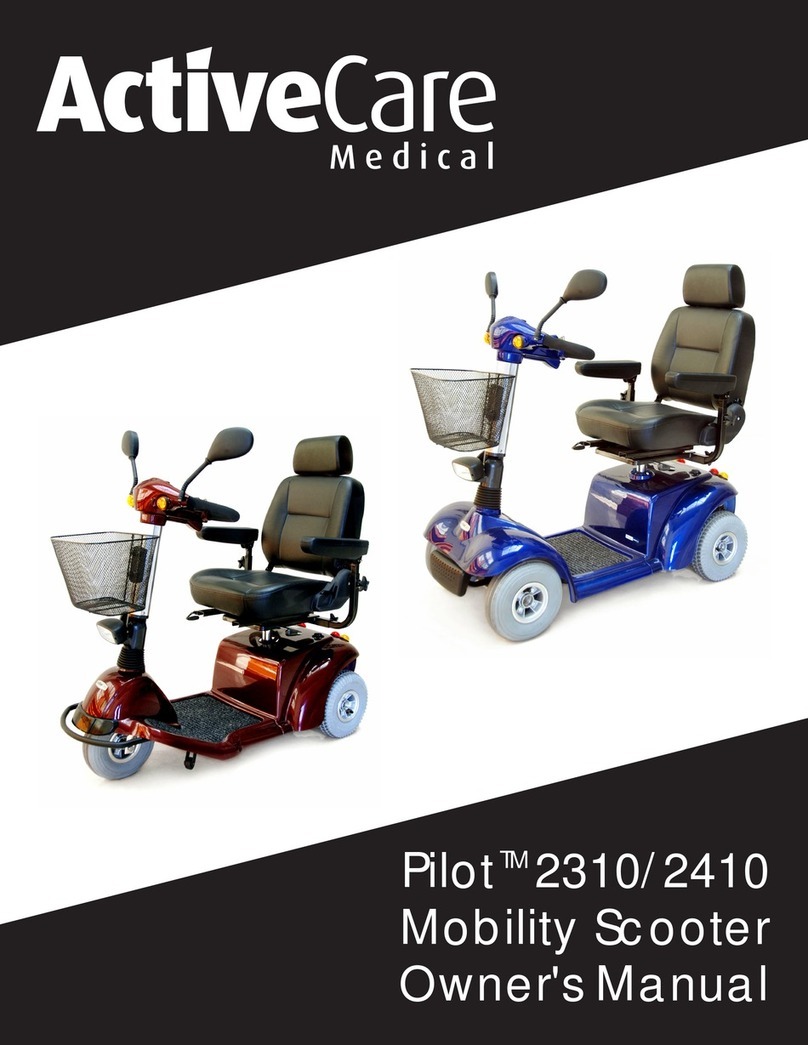
Active Care Medical
Active Care Medical Pilot 2310 User manual
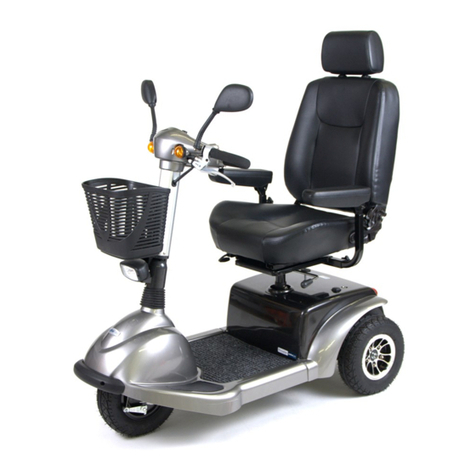
Active Care Medical
Active Care Medical Prowler 3310 User manual

Active Care Medical
Active Care Medical Pilot 2310 User manual

Active Care Medical
Active Care Medical Spitfire EX 1420 User manual

Active Care Medical
Active Care Medical Spitfire 1310 User manual
